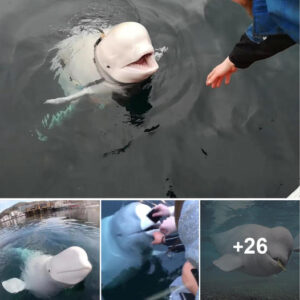Daniel Parker prefers to spend his time tromping through swamps and forests of Florida in search of creepy crawly critters. As a field biologist for University of Central Florida and a guide of wildlife tours for his company, Sunshine Serpents, he has seen many unusual creatures. However, none have been as strange as the snake that emerged from an egg in his living room. Not only was this a valuable ᴀʟʙɪɴᴏ Honduran milk snake; it had an exceptional feature: two heads.

Several months ago, the eggs were laid by a female Honduran milk snake that was ᴀʟʙɪɴᴏ. ᴀʟʙɪɴᴏs are missing all dark pigmentation in the skin. In milk snakes the ᴀʟʙɪɴᴏ trait makes their coloration appear as glow in the dark shades of red, orange, and white. Even ᴀʟʙɪɴᴏ individuals with merely one head are so striking in color that they usually attract attention. However, as Parker dug through the moss substrate in his incubation container to find his brightly colored hatchling snakes, the first thing he noticed was not the colors. The first baby he saw had two heads.

“I did a double take,” said Parker. “I couldn’t believe what I was looking at.” Most of the two-headed snakes documented in the past have displayed the typical coloration seen in the species in the wild. For this snake to be both two-headed and ᴀʟʙɪɴᴏ was a double whammy. “This might be the most beautiful two-headed snake that has ever existed,” added Parker.
According to Parker two-headedness or “bicephalism,” as the condition is known by scientists, is extremely rare. Its occurrence may be around one in 10,000. Snakes may have a better sᴜʀᴠɪᴠᴀʟ rate than other bicephalic animals.

Biologist Parker says two-headed snakes have been documented to live as long as 20 years in ᴄᴀᴘᴛɪᴠɪᴛʏ. With two brains giving commands to a single body, he says the snake, which isn’t venomous, would have a difficult time sᴜʀᴠɪᴠɪɴɢ in the wild.

Milk snakes are said by some to suck milk from cows’ udders, but this is a myth. They do however favour living in barns, as they like cool dark environments, which may be the source of the misconception. Their diet consists of insects, lizards, birds and small mammals.





